Charts of the Week
Current economic trends from 7 to 11 March 2022: turnover based on fiscal verification of invoices, electricity consumption, traffic of electronically tolled vehicles on Slovenian motorways and other trends
In the face of higher prices, total turnover based on fiscal verification of invoices in the last week of February and the first week of March was almost a tenth higher in nominal terms than in the same periods of 2020 and 2021. Electricity consumption in February was about the same as last February and lower than in February 2020 but the gap with the pre-epidemic period narrowed again. Freight traffic on Slovenian motorways was up by about 5% year-on-year and was also higher than in the same month before the epidemic. Trade in goods and manufacturing output fell in January compared to December but remained significantly higher year-on-year.
Turnover based on fiscal verification of invoices, 20 February–5 March 2022
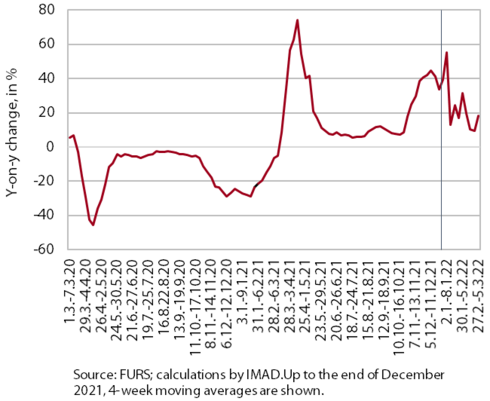
According to data on the fiscal verification of invoices, total turnover between 20 February and 5 March 2022 was 10% higher year-on-year in nominal terms and 8% higher than in the same period of 2020, which was partly due to higher prices. Year-on-year growth was lower than in the previous two weeks, mainly due to the lifting of restrictions on store operations and on the movement of individuals in mid-February last year. This was reflected mainly in lower year-on-year turnover growth in trade (2%). However, year-on-year growth was still very high for activities that were almost completely shut down in the same period of 2021 – especially tourism-related services. Total turnover was 8% higher in nominal terms than in the same period of 2020, mainly due to higher turnover in retail and wholesale trade.
Electricity consumption, February 2022
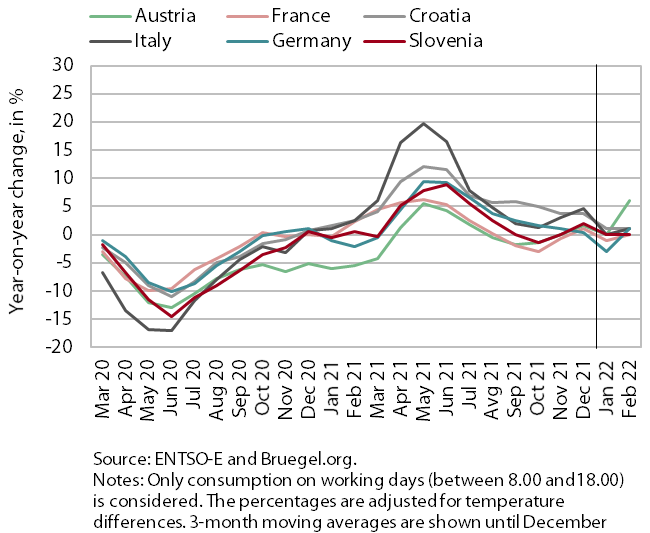
Electricity consumption in February was about the same as in February 2021 but 1% lower than in February 2020. The gap with the same period before the epidemic further narrowed compared to the previous month, reflecting the improvement of the epidemiological situation and the easing of containment measures at the end of February. Electricity consumption in Slovenia’s main trading partners remained largely unchanged year-on-year in February, except in Austria, where it was significantly higher (6%) due to the base effect. Compared to February 2020, consumption was higher in France (2%), Italy (1%) and Croatia (5 %), while it was slightly lower in Austria (-2%) and Germany (-1%).
Traffic of electronically tolled vehicles on Slovenian motorways, February 2022
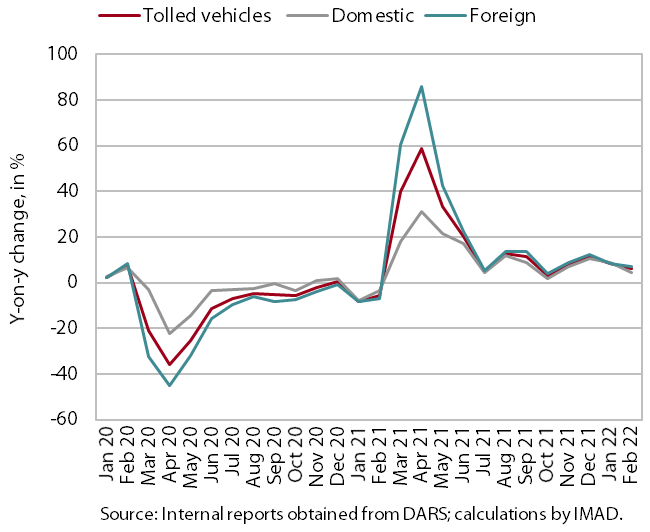
In February 2022, the volume of freight traffic on Slovenian motorways increased by 6% year-on-year. The high growth compared to February 2021, which had the same number of working days, was partly due to the low base effect related to the second wave of the epidemic last year. Adjusted for working days, freight traffic volume was 8% higher than in February 2019 and 5% higher than in February 2020 (just before the start of the epidemic). The share of foreign vehicle traffic, which varies between 58% and 62% from month to month, was at the upper end of this range in February this year, just as it was in the two comparable months before the epidemic. In non-leap years, February is usually one of the months with the lowest traffic volumes, due to the average of two fewer working days and the weather conditions.
Trade in goods, January 2022
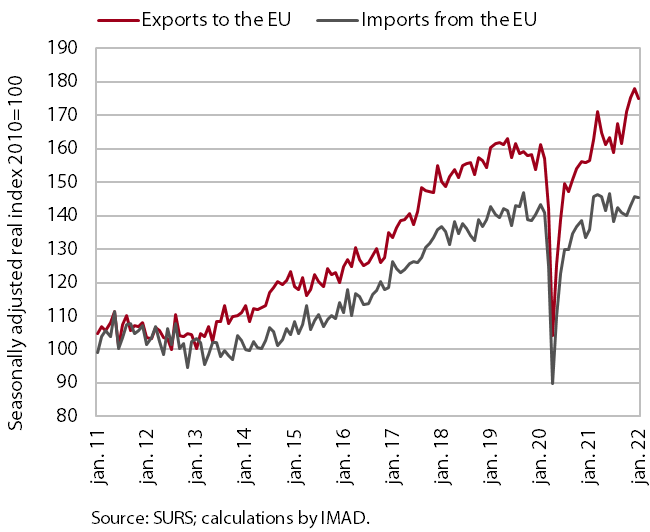
Trade in goods remained high at the beginning of 2022 although several months of trade growth came to a halt in January. Real exports and imports of goods dropped slightly in January, especially from and to EU Member States, but remain significantly higher than a year ago. Compared to January 2020 (i.e. before the epidemic), exports to EU Member States rose by 8.4% and imports by 1.6%. Export expectations were high at the beginning of the year, but the surveys conducted in the first half of February do not yet reflect the increased uncertainty related to the war in Ukraine.
Manufacturing, January 2022
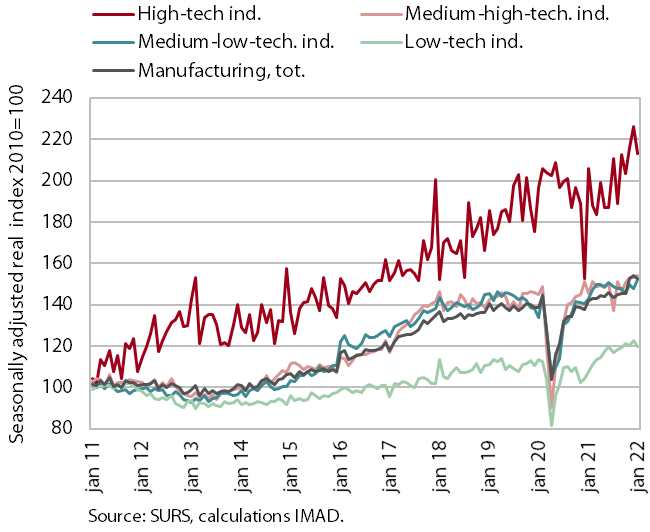
Manufacturing output fell in January after growing in the previous two months. Growth in high- and low-technology industries came to a halt, while production volume in medium-high-technology industries increased. On a year-on-year basis, manufacturing again recorded high growth, with the strongest increase in production volume in low-technology industries and a slightly lower increase in high- and medium-technology industries. Other manufacturing was the largest contributor to the high year-on-year growth of low-technology industries, while the highest growth in large medium-technology industries was recorded in the manufacture of fabricated metal products and automotive industry. Motor vehicle manufacturing was higher year-on-year for the first time in four months.
